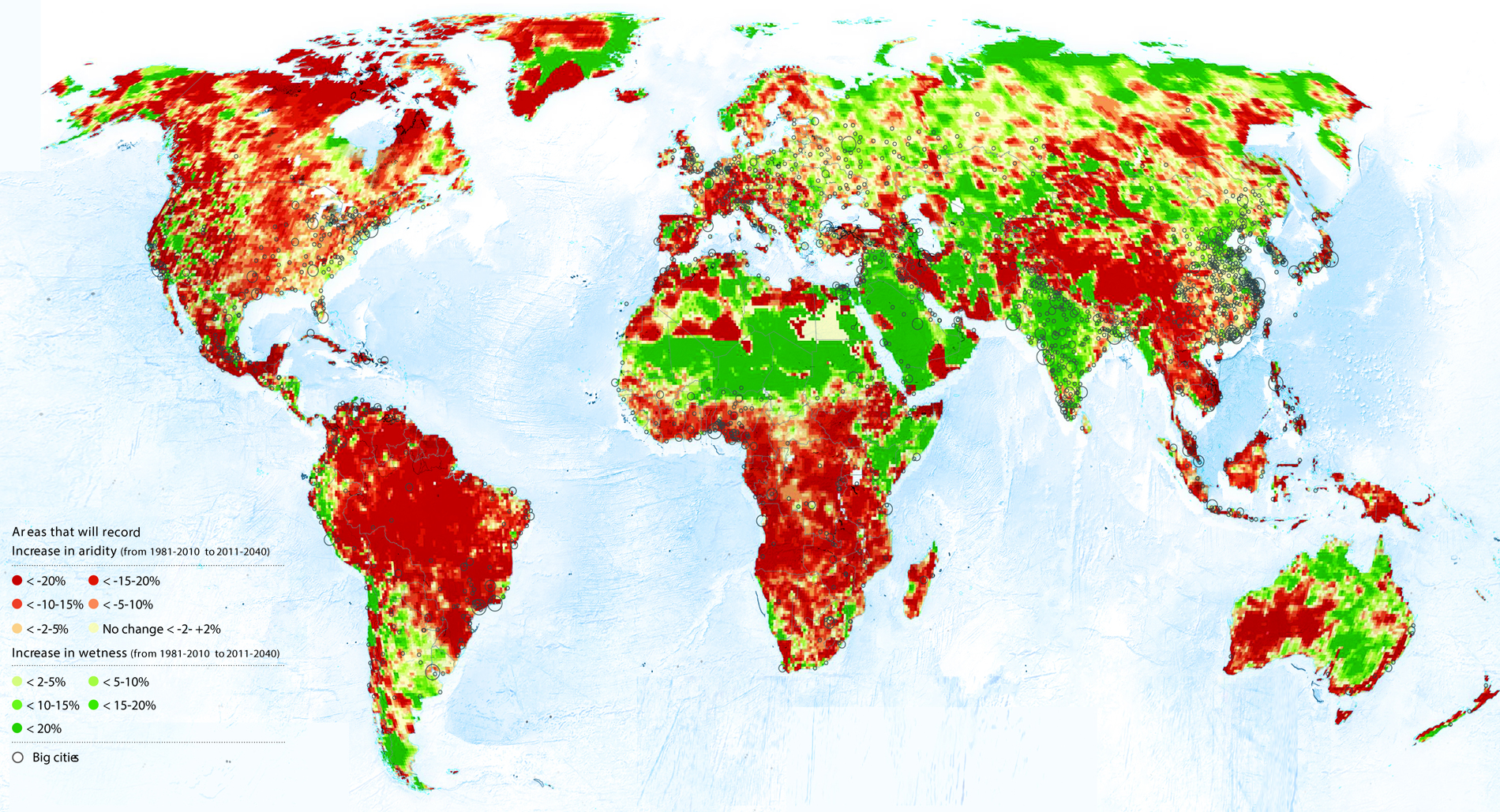
Most of the desertification is happening in Africa and Asia, which account for almost 67 per cent of the degradation occurring in dryland areas. By 2040, some 43 per cent of big cities (housing 0.3 million population), located in dryland areas, will be hit by desertification; in non-dryland areas over 70 per cent of such cities will grow drier.
A Bad Move
1951-1980
Of the 6.1 billion hectares* of dryland in the world, nearly one billion are naturally hyperarid or deserts. Human action since the dawn of civilization is causing degradation in the remaining drylands.
Aridity is the degree of dryness at a given location over a long period of time. Artidity Index is the ratio of annual precipitation (P) to annual potential evapotranspiration (PET). Decrease in AI means conditions are becoming drier; in contrast, increase in AI means conditions are getting wetter.

* as per the 1st World Atlas of Desertification published by UNEP in 1992
Data source: Third edition of World Atlas of Desertification released in 2018 by Joint Research Centre of the European Commission
Big Shift
1981-2010
Between 1951-1980 and 1981-2010, drylands have increased 0.35 per cent. The areas hit are in India, Africa, Eastern Australia, Eurasia, and North America, Northern China and South America.

Data source: Third edition of World Atlas of Desertification released in 2018 by Joint Research Centre of the European Commission
Parched Future
2011-2040
Over 70 per cent of the big cities* in non-dryland regions will become drier by 2040. Just 29 per cent of them will become wetter.

* Cities with over 0.3 million population. Currently there are 1,692 big cities of which 1,109 are in non-dryland regions.
Data source: Third edition of World Atlas of Desertification released in 2018 by Joint Research Centre of the European Commission
Data source:
✸ World Atlas of Desertification, 3rd edition, June 2018; Joint Research Centre of the European Commission
